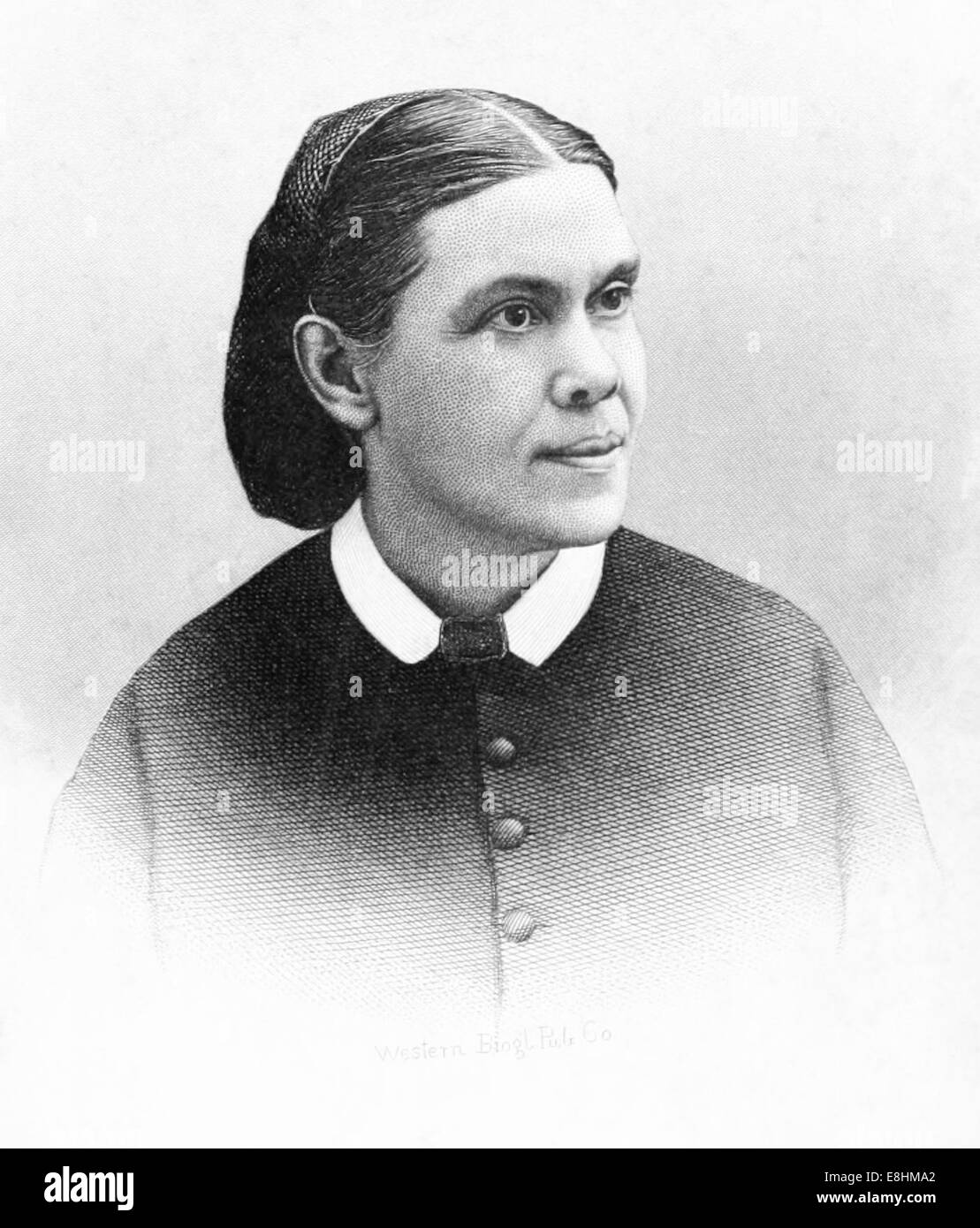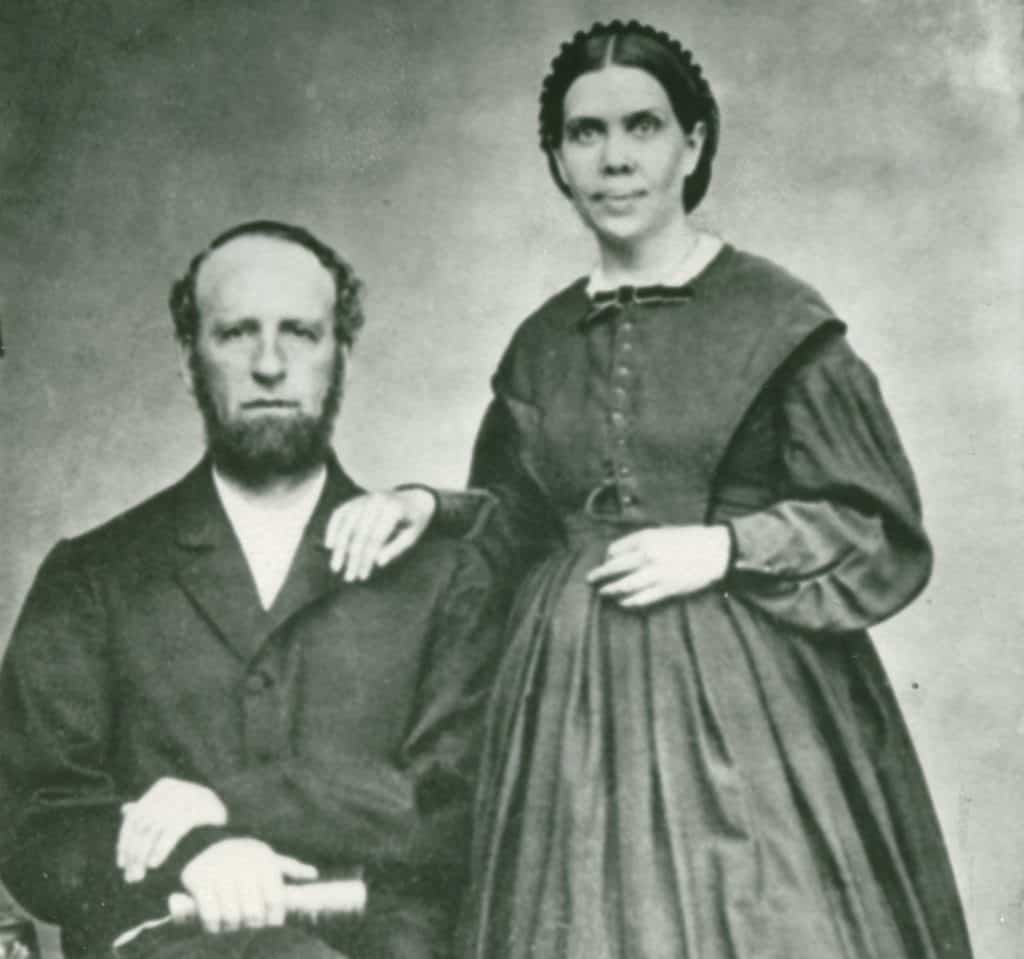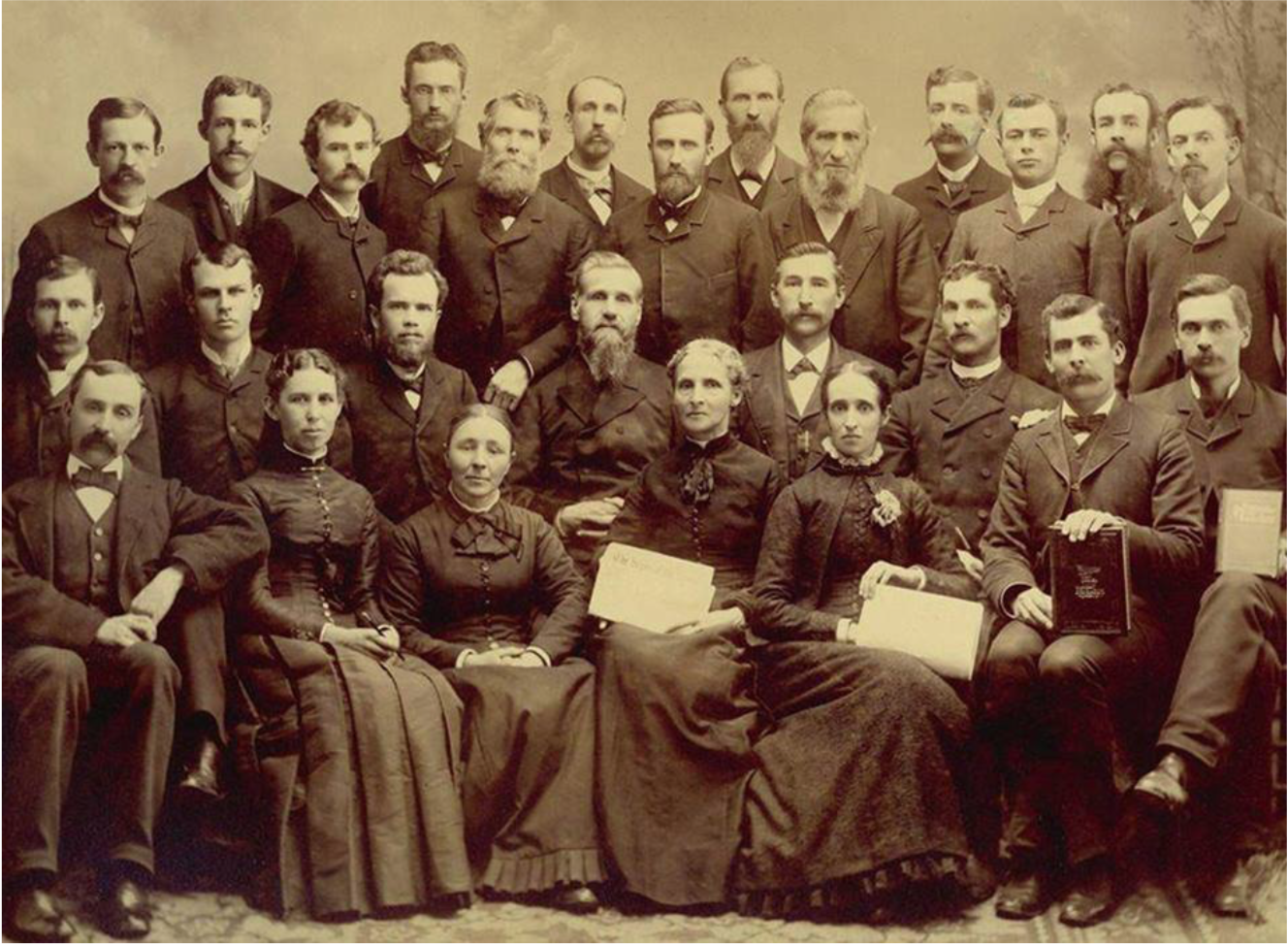Unveiling The Visionaries: Who Founded The Seventh-day Adventist Church?
The Seventh-day Adventist Church stands today as a global religious movement, boasting millions of adherents across nearly every country in the world. Its widespread presence and unique theological perspectives often lead many to wonder about its origins and, more specifically, who truly stands as the Seventh-day Adventist founder. Unlike many historical institutions that can point to a single, undisputed progenitor, the Seventh-day Adventist Church emerged from a collective effort, a confluence of passionate individuals who, in the wake of profound spiritual disappointment, dedicated their lives to understanding biblical prophecy and sharing what they believed to be rediscovered truths. This article delves into the lives and pivotal contributions of these foundational figures, exploring how their distinct roles and shared convictions forged a movement that would eventually grow into a worldwide denomination.
Understanding the genesis of the Seventh-day Adventist Church requires looking beyond a singular personality and appreciating the collaborative spirit that characterized its formative years. It was a period of intense biblical study, fervent prayer, and robust theological debate among a small group of earnest believers in the mid-19th century. Their journey was marked by both profound conviction and challenging adversity, ultimately leading to the formal establishment of a church built upon distinct doctrines. Join us as we uncover the stories of the remarkable individuals who collectively served as the Seventh-day Adventist founder figures, shaping its theology, structure, and enduring mission.
Table of Contents
- The Great Disappointment and the Genesis of a Movement
- Ellen G. White: A Central Figure in Adventist Foundations
- James Springer White: The Organizer and Publisher
- Joseph Bates: The Sabbath Champion
- Hiram Edson: The Sanctuary Visionary
- Shaping Core Beliefs: Key Doctrines and Their Origins
- The Formal Organization of the Seventh-day Adventist Church
- The Enduring Legacy of the Seventh-day Adventist Founders
The Great Disappointment and the Genesis of a Movement
The story of the Seventh-day Adventist Church begins not with a triumphal declaration, but with a profound disappointment. In the early 1840s, a widespread religious revival swept across America, fueled by the teachings of William Miller, a Baptist preacher who predicted Christ's return around 1843-1844. Thousands, known as Millerites, eagerly anticipated this event. When October 22, 1844, passed without the expected advent, the Millerites experienced what became known as "The Great Disappointment." This moment was a crushing blow for many, leading to widespread disillusionment and the scattering of believers. However, for a dedicated few, it became a catalyst for deeper study and a renewed search for truth. Instead of abandoning their faith, they re-examined the scriptures, seeking to understand where their interpretation had gone awry. It was from this crucible of disappointment and fervent re-examination that the seeds of the Seventh-day Adventist movement were sown. These earnest seekers, refusing to give up on their belief in Christ's imminent return, began to explore new understandings of biblical prophecy, paving the way for the emergence of what would become the Seventh-day Adventist founder group.
Ellen G. White: A Central Figure in Adventist Foundations
While the Seventh-day Adventist Church does not attribute its founding to a single individual, Ellen G. White (née Harmon) is undeniably one of the most prominent and influential figures among the collective Seventh-day Adventist founder group. Her unique spiritual experiences, prolific writings, and tireless leadership were instrumental in shaping the church's doctrines, mission, and organizational structure. Born in 1827, her life story is intrinsically linked to the rise of Adventism.
Early Life and Spiritual Calling
Ellen Gould Harmon was born in Gorham, Maine, on November 26, 1827, the youngest of eight children to Robert and Eunice Harmon. Her early life was marked by a severe childhood accident at age nine, when she was struck in the face by a thrown stone. This injury left her disfigured and in poor health, ending her formal education. Despite these physical challenges, Ellen developed a deep spiritual sensitivity. She was a devout Methodist and, along with her family, became a fervent believer in William Miller's message of the soon coming of Christ. After the Great Disappointment, like many Millerites, she grappled with shattered expectations. However, in December 1844, at the age of 17, Ellen experienced her first vision, which she believed was from God. This vision, which depicted the journey of the advent believers to the New Jerusalem, brought comfort and direction to the disheartened Millerites. Over the course of her life, she would experience thousands more, which she recorded and shared, believing them to be divine guidance for the nascent Adventist movement. Her experiences and subsequent writings cemented her role as a spiritual guide and a key Seventh-day Adventist founder.
Personal Data of Ellen G. White
| Full Name | Ellen Gould White (née Harmon) |
| Born | November 26, 1827, Gorham, Maine, USA |
| Died | July 16, 1915, St. Helena, California, USA |
| Spouse | James Springer White |
| Children | Henry Nichols White, Edson White, William C. White, John Herbert White |
| Known For | Co-founder of the Seventh-day Adventist Church, prolific author, visionary, spiritual leader. |
| Notable Works | Steps to Christ, The Desire of Ages, The Great Controversy, Counsels on Diet and Foods |
A Prolific Writer and Visionary Leader
Ellen G. White's leadership was instrumental in guiding the early Adventist believers. She wasn't a formal preacher in the traditional sense, but her influence came through her visions, which were seen as divine counsel, and her incredibly prolific writing. Over her lifetime, she wrote more than 100,000 pages of manuscript, which were compiled into over 100 books and numerous articles. Her writings covered a vast array of topics, including theology, health reform, education, family life, and practical godliness. Her books like The Desire of Ages (on the life of Christ) and The Great Controversy (on the conflict between good and evil throughout history) became foundational texts for the church. She consistently emphasized the importance of biblical study, the soon coming of Christ, and the need for a healthy lifestyle. Her insights on health, in particular, were remarkably progressive for her time, advocating for vegetarianism, temperance, and natural remedies long before they became mainstream. Her role as a spiritual guide, coupled with her tireless efforts in writing and speaking, solidified her position as a central Seventh-day Adventist founder, providing both theological direction and practical guidance for the emerging movement.
James Springer White: The Organizer and Publisher
While Ellen G. White provided much of the spiritual and prophetic guidance, her husband, James Springer White, was the organizational and administrative backbone of the early Seventh-day Adventist movement. Born in 1821, James was a former schoolteacher and Millerite preacher who, after the Great Disappointment, became a devoted advocate for the emerging Adventist truths. His practical skills, keen intellect, and unwavering dedication were crucial in transforming a scattered group of believers into a cohesive denomination. He was a visionary in his own right, understanding the vital role of communication in spreading their message.
A Partnership of Purpose
James and Ellen G. White's marriage in 1846 marked the beginning of a powerful partnership that would profoundly impact the Seventh-day Adventist Church. While Ellen received visions and wrote extensively, James focused on publishing and organizing. He understood that without a means to disseminate their beliefs, the movement would remain fragmented. In 1849, with limited funds, he launched the first Adventist periodical, "The Present Truth," which later evolved into "The Advent Review and Sabbath Herald" (now the Adventist Review). This publication became the primary vehicle for sharing new understandings of scripture, especially the Sabbath truth, and for connecting believers across distances. James was a tireless worker, often setting type and printing the papers himself. He also played a critical role in advocating for the formal organization of the church, recognizing the need for structure to support their growing global mission. His administrative acumen, combined with Ellen's spiritual insights, made them an unstoppable force, truly a collective Seventh-day Adventist founder team.
Joseph Bates: The Sabbath Champion
Another pivotal figure in the early Seventh-day Adventist movement was Joseph Bates. Born in 1792, Bates was a seasoned mariner, a sea captain who had experienced a dramatic conversion to Christianity. He was a devout Millerite and, after the Great Disappointment, became a fervent seeker of truth. Bates played a key role in propagating Adventist beliefs, especially the doctrine of the Sabbath as the seventh day of the week. His conviction regarding the Sabbath was so strong that he dedicated himself to sharing this truth with other Millerites. He was a powerful and persuasive speaker, and his personal testimony, combined with his deep biblical knowledge, convinced many of the importance of keeping the seventh-day Sabbath. It was Bates who introduced the Sabbath truth to James and Ellen White, a doctrine that would become one of the distinguishing tenets of the Seventh-day Adventist Church. His unwavering commitment and evangelistic zeal made him an indispensable Seventh-day Adventist founder, laying the groundwork for one of the church's most unique beliefs.
Hiram Edson: The Sanctuary Visionary
Hiram Edson was another crucial figure in the immediate aftermath of the Great Disappointment. A farmer and Millerite from Port Gibson, New York, Edson, like many others, was devastated when Christ did not return on October 22, 1844. However, just days later, while walking through a cornfield with a fellow believer, Edson had a profound spiritual experience. He believed he saw a vision of Christ entering, not an earthly sanctuary, but the Most Holy Place of the heavenly sanctuary, to begin a new phase of His ministry as High Priest. This vision provided a crucial theological explanation for the Great Disappointment, shifting the focus from Christ's return to His work in heaven. He was a Bible scholar who helped shape several Adventist beliefs, particularly the understanding of the heavenly sanctuary and the investigative judgment. This understanding became a cornerstone of Adventist theology, providing a framework for understanding Christ's ongoing ministry and the significance of the Sabbath. Edson's vision and subsequent biblical studies were instrumental in providing a renewed sense of purpose and direction for the scattered Millerites, solidifying his place as a significant Seventh-day Adventist founder.
Shaping Core Beliefs: Key Doctrines and Their Origins
The collective efforts of these individuals—Ellen G. White, James White, Joseph Bates, Hiram Edson, and others—were pivotal in shaping the distinctive doctrines that define the Seventh-day Adventist Church. Their intense study of the Bible, often conducted in small groups, led them to embrace several key beliefs that set them apart from other Christian denominations. These core tenets include:
- The Sabbath: As championed by Joseph Bates, the belief in the observance of the seventh-day Sabbath (Saturday) as the biblical day of worship, a memorial of creation and a sign of God's people.
- The Heavenly Sanctuary: Based on Hiram Edson's vision, the understanding that Christ's ministry in the heavenly sanctuary began in 1844, involving an investigative judgment before His second coming.
- The Second Coming of Christ: A foundational belief inherited from the Millerite movement, emphasizing the literal, visible, and imminent return of Jesus Christ.
- The State of the Dead: The belief that the dead are unconscious in the grave until the resurrection, rejecting the concept of an immortal soul.
- The Gift of Prophecy: The conviction that the spiritual gift of prophecy was manifested in the ministry of Ellen G. White, providing guidance and counsel to the church.
- Health Message: Influenced by Ellen G. White's visions, an emphasis on health reform, including vegetarianism, temperance, and holistic well-being, as part of spiritual living.
These doctrines were not developed in isolation but through collaborative study and prayer, with each of the Seventh-day Adventist founder figures contributing significantly to their articulation and acceptance within the nascent movement. Over the ensuing decades, the church would continue to refine and propagate these beliefs globally.
The Formal Organization of the Seventh-day Adventist Church
For several years after the Great Disappointment, the Advent believers operated as a loosely knit group, connected primarily through publications like James White's "Review and Herald." However, as their numbers grew and their understanding of biblical truths solidified, the need for formal organization became apparent. James White, in particular, recognized that a structured body was essential for efficient evangelism, the establishment of institutions (like publishing houses and later, hospitals and schools), and the legal protection of church properties. There was initial resistance from some who feared that organization would stifle spiritual freedom or lead to a "Babylonish" system. However, the practical necessities outweighed these concerns.
Through a series of meetings and conferences in the late 1850s and early 1860s, the Advent believers gradually moved towards formalizing their structure. On May 21, 1863, in Battle Creek, Michigan, the General Conference of Seventh-day Adventists was officially organized. This marked a pivotal moment, transforming a movement into a recognized denomination. The name "Seventh-day Adventist" was chosen to reflect their two distinguishing beliefs: the observance of the seventh-day Sabbath and their belief in the imminent advent (second coming) of Jesus. This formal organization, largely driven by the foresight and efforts of James White, provided the framework for the church's future growth and global mission, solidifying the legacy of each Seventh-day Adventist founder.
The Enduring Legacy of the Seventh-day Adventist Founders
The legacy of the individuals who collectively served as the Seventh-day Adventist founder figures is profound and far-reaching. From the initial disappointment of 1844, they forged a vibrant, global movement dedicated to spreading their unique understanding of biblical truth. Their commitment to intense biblical study, their willingness to challenge conventional interpretations, and their unwavering faith in God's leading laid the groundwork for a church that today operates in over 200 countries and territories worldwide. The emphasis on health, education, and missionary work, largely inspired by Ellen G. White's writings, has led to the establishment of a vast network of hospitals, schools, and humanitarian organizations that serve communities globally, regardless of their faith background.
The story of the Seventh-day Adventist founder group is not just a historical account; it's a testament to the power of collective vision and perseverance. Their dedication to truth, even in the face of ridicule and hardship, created a denomination known for its distinctive beliefs, its global outreach, and its commitment to holistic well-being. Their work continues to influence millions, demonstrating that a movement can indeed be founded not by a single individual, but by a committed group of diverse talents united by a shared purpose. The principles they championed, such as the importance of health, education, and community service, remain central to the church's mission today, ensuring their legacy endures.
Conclusion
In conclusion, while there isn't a single "Seventh-day Adventist founder" in the traditional sense, the church owes its existence and distinct identity to the collaborative efforts of several remarkable individuals. Ellen G. White, with her prophetic insights and prolific writings; James Springer White, with his organizational prowess and publishing initiatives; Joseph Bates, the tireless champion of the Sabbath; and Hiram Edson, who provided crucial theological understanding of the heavenly sanctuary—each played an indispensable role. Their collective dedication, intellectual rigor, and spiritual conviction transformed a moment of profound disappointment into the genesis of a dynamic global faith movement.
The Seventh-day Adventist Church today stands as a living testament to their foundational work, continuing to uphold the core beliefs they established and expanding its mission of holistic evangelism, health, and education worldwide. We hope this exploration has provided you with a clearer understanding of the complex and inspiring origins of this significant denomination. What aspects of the Seventh-day Adventist founders' story resonated most with you? Share your thoughts in the comments below, or explore more articles on our site to delve deeper into the history and impact of global religious movements.



Detail Author:
- Name : Celia Reichert
- Username : cbayer
- Email : emmerich.aryanna@fay.com
- Birthdate : 1983-11-29
- Address : 52110 Upton Alley Suite 427 Lake Kamilleville, IL 91390
- Phone : 321.376.0878
- Company : Wehner-Pagac
- Job : Terrazzo Workes and Finisher
- Bio : Laborum et harum officia ut necessitatibus a dolores. In libero laudantium ipsa aliquid iusto nostrum. Ut blanditiis vel quo atque omnis atque. Sint fugiat earum laudantium ipsa labore ut et qui.
Socials
instagram:
- url : https://instagram.com/francisco_dev
- username : francisco_dev
- bio : Rerum consequatur animi enim ad. Atque ut itaque blanditiis illum quod. Laudantium sequi aut quia.
- followers : 939
- following : 2035
facebook:
- url : https://facebook.com/franciscowindler
- username : franciscowindler
- bio : Ipsam nobis sit ipsum reiciendis omnis.
- followers : 5295
- following : 303
twitter:
- url : https://twitter.com/francisco2315
- username : francisco2315
- bio : Velit consequuntur unde enim omnis laborum. Quidem ipsam non rerum in hic nisi sit dolores. Earum soluta officia totam excepturi omnis asperiores officiis.
- followers : 1188
- following : 2257
linkedin:
- url : https://linkedin.com/in/fwindler
- username : fwindler
- bio : Earum quos odit aut aut ut nemo.
- followers : 2685
- following : 747
tiktok:
- url : https://tiktok.com/@franciscowindler
- username : franciscowindler
- bio : Voluptates adipisci enim impedit nobis esse est sed aliquid.
- followers : 1089
- following : 1796
